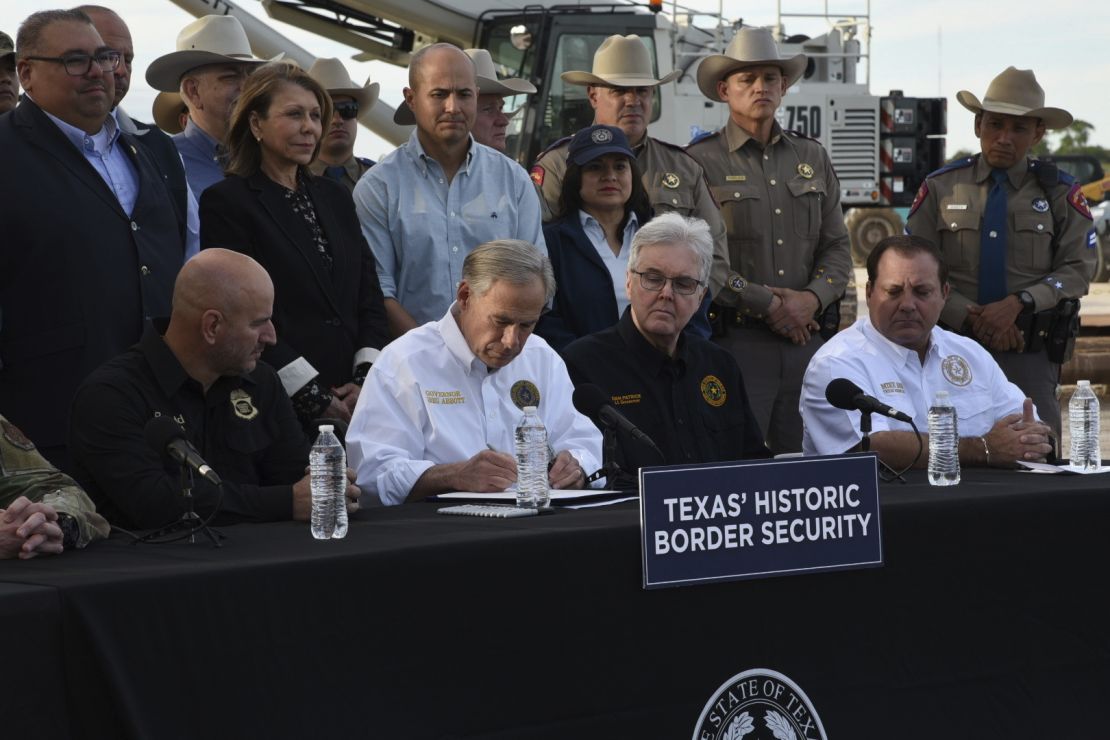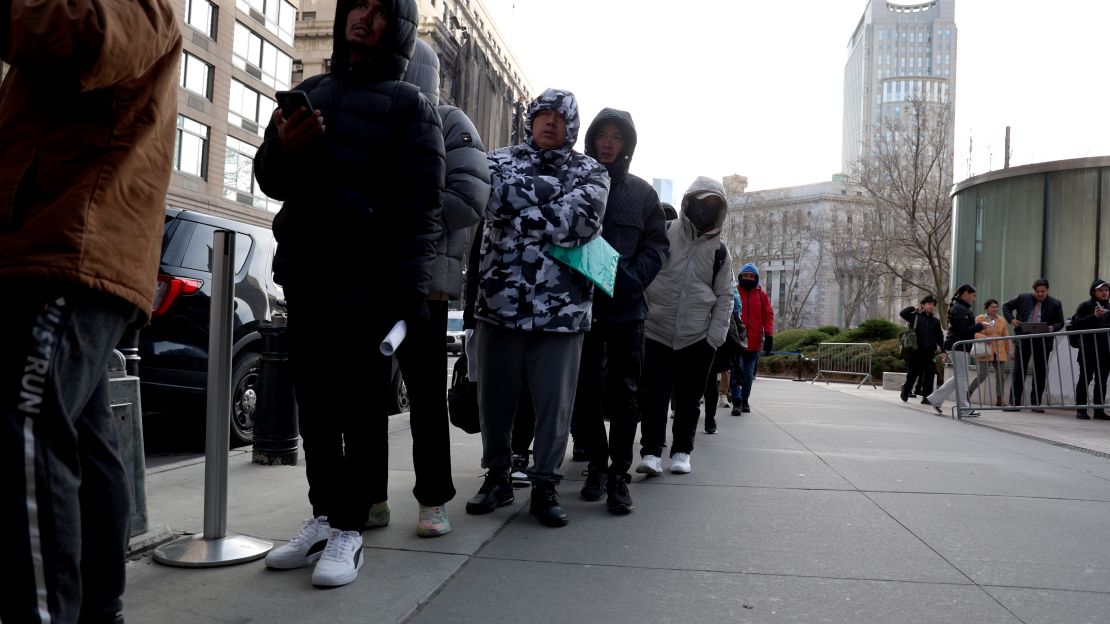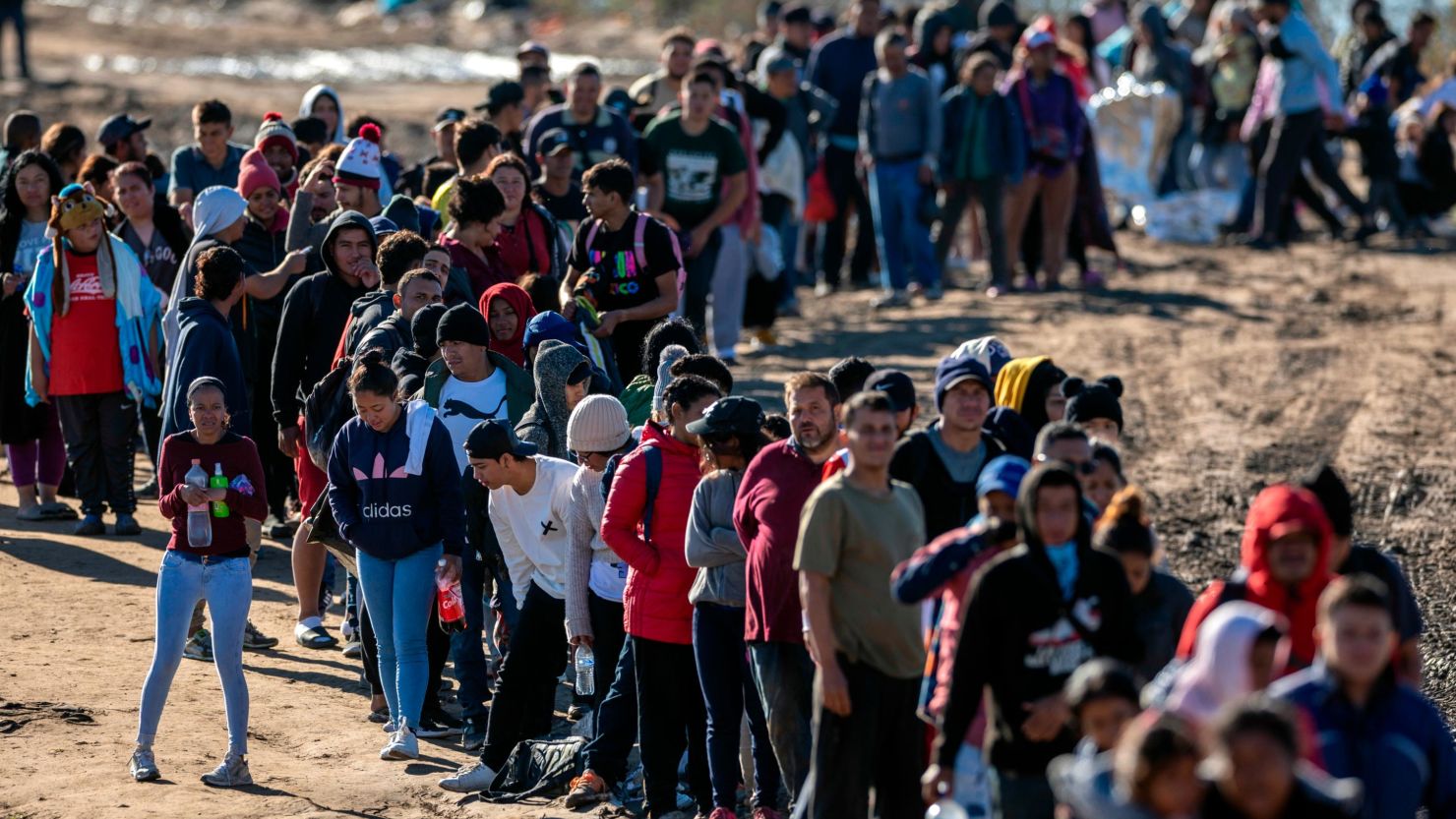When it comes to the US-Mexico border, there’s often so much noise that it’s hard to hear — and see — what’s really going on.
I’ve covered immigration for more than a decade, through three different presidential administrations and through many different moments when people on all sides of the issue have warned of crisis conditions and authorities have appeared overwhelmed.
That’s happening once again. But a few different factors make this moment feel different. The situation is intensifying on several fronts that could have significant consequences both in everyday people’s lives and on the national political stage.
Here are five big reasons why it’s important to pay attention to what’s going on right now:
1. Many people rely on ports of entry along the border. And we’ve seen a growing number of them closing.
In the past few weeks, the Biden administration has closed ports of entry to pedestrians or vehicles in Eagle Pass, Texas; Lukeville, Arizona; and San Ysidro, California.
On December 17, officials announced they’d also be temporarily shutting down international railway crossings in Eagle Pass and El Paso.
Why is this happening? Officials say the number of migrants illegally crossing the border in some locations is increasing so significantly that they need to divert resources from ports of entry to handle the influx.

US Customs and Border Protection blames misinformation from transnational criminal organizations and cartels for the recent spike. Border Patrol Chief Jason Owens told CNN’s Rosa Flores recently that agents are “simply overwhelmed” and noted that closing the ports had freed up employees to help process migrants, but also came at a cost.
“It’s a consequence to our lawful trade and travel. Everybody’s feeling it right now,” he said.
Local officials say the port closures are having a devastating economic and personal impact on communities.
Arizona Gov. Katie Hobbs, a Democrat, said in a news release that the decision to close the port in her state “has led to an unmitigated crisis in the area and put Arizona’s safety and commerce at risk.”
2. Trump is making immigration a central focus of his campaign once again. But the words he’s using are changing.
Former President Donald Trump kicked off his 2016 election campaign with notorious comments describing Mexican immigrants as criminals and rapists. And in the leadup to the 2024 election, he appears to be doubling down.
As my colleague Zachary B. Wolf has noted recently, Trump’s “increasingly harsh language demonizing migrants” is reaching new extremes.
In a New Hampshire rally one week before Christmas, Trump drew comparisons to the language of Nazi Germany with comments about migrants from mostly Africa, Asia and South America “poisoning the blood of our country.”

The next day, Trump claimed, without evidence, that migrants are largely coming to the US from prisons and mental institutions. And he promised to reorient the US government to purge migrants.
Cracking down on illegal immigration was a focus of Trump’s presidency, and there’s little doubt he’d prioritize the issue once again if reelected.
3. Biden seems ready to support the kinds of restrictions he previously criticized.
Before his election in 2020, President Joe Biden repeatedly vowed to roll back the immigration policies of his predecessor. But in the push to get Congress to approve more aid for Ukraine, the Biden administration has signaled a willingness to implement major restrictions that echo changes pursue by the Trump administration.
Negotiations are ongoing. But proposals under consideration include turning back migrants at the US-Mexico border without giving them the chance to seek asylum, expanding a fast-track deportation procedure to include more undocumented immigrants, and raising the credible fear standard for asylum seekers, sources told CNN’s Priscilla Alvarez and Camila DeChalus.
And immigrant rights groups are releasing increasingly frantic statements, decrying what they see as Biden’s willingness to trade away the lives of vulnerable people who are legally entitled to seek asylum. Frustrated by the lack of attention the issue was getting, RAICES said this week that it had bought a seven-story digital billboard ad displaying a shackled Lady Liberty in Times Square warning that “the end of asylum is dangerously near.”
For its part, the Biden administration is defending its track record, with a White House official telling CNN that the administration has led the largest expansion of legal immigration pathways in decades.
But advocates and some lawmakers say Biden is running the risk of losing support from key allies if he makes the concessions he’s reported to be considering.
“If he does go too far in the Trump direction, it’s going to be felt at the ballot box next year, no doubt about it,” Democratic Sen. Alex Padilla told CNN’s Manu Raju.
4. States are taking matters into their own hands. And the potential impact of a new law in Texas is huge.
Frustrated by what they call the federal government’s failure to secure the border, some state leaders are trying to take matters into their own hands. Texas Gov. Greg Abbott, a Republican and outspoken critic of Biden, signed a new law last week that makes entering the state illegally a state crime, gives local law enforcement the power to arrest migrants and gives judges in the state the ability to issue orders removing them to Mexico.

The stated aim of the law, which is scheduled to go into effect in March, is cracking down on illegal immigration. Advocates call the law unconstitutional and argue that it will fuel racial profiling in Texas, where 40% of residents are Latino.
The Republican author of the Texas bill has maintained that the measure is constitutional. But state officials may soon have to make their case for the new law in court.
Civil rights groups just filed a lawsuit asking a federal judge to block it.
On the day Abbott signed the bill, protesters nearby said they were already afraid of the impact it could have on their communities.
5. In the US, the ‘border’ is everywhere.
The border isn’t just the 1,933-mile line that divides the US and Mexico. It’s something that can be seen in communities across the US.
And for months, we’ve heard many mayors –— including prominent Democratic leaders — saying their cities are struggling to handle an influx of migrants.
New York Mayor Eric Adams said earlier this year that the migrant crisis would “destroy” the city.
And an order he signed could soon lead to the eviction of thousands of migrants from city shelters as part of Adams’ plan to enforce a new 60-day limit for families. A similar 30-day rule for single adults has been in place for several weeks. Families who receive eviction notices can return to the city’s intake center to re-apply for a new shelter spot.
City officials say they need more support from the federal government, and Adams has said the city’s budget will have to be significantly cut in order to meet the needs of the ongoing crisis.

The continuing pushback from local leaders in his own party could have political implications for Biden heading into the 2024 election, and may be one reason why these days, he appears more open to taking a tougher stance.
Any one of these storylines alone is significant news.
Looking at them all together, it’s clear things have reached a crescendo that’s impossible to ignore.
In the coming months, I’ll be watching what’s happening at the border closely.
Many things about the future are uncertain, but there’s no doubt that what we hear and see unfolding there is going to be a big part of the conversation in 2024.
CNN’s Rosa Flores, Sara Weisfeldt, Priscilla Alvarez, Camila DeChalus, Zachary B. Wolf and Gloria Pazmino contributed to this report.






